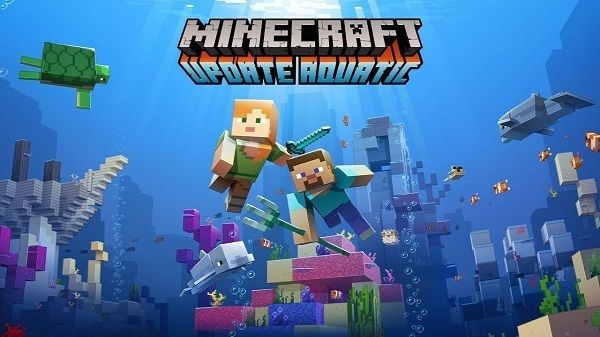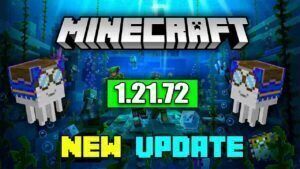The Role of Patch Updates in Game Monetization: Lessons from Minecraft 1.21.72
Download Now: https://tinyurl.com/jv84ekmm
In the modern gaming landscape, one thing has become increasingly clear: patch updates are not just about fixing bugs—they're a critical part of game monetization. A shining example of this strategy is the latest update from Mojang: Minecraft Bedrock Edition 1.21.72. While it may seem like a routine bug-fix patch on the surface, it carries strategic value far beyond its changelog.
In this article, we’ll break down how Minecraft 1.21.72 plays a pivotal role in Mojang’s revenue model, what developers can learn from it, and how game studios—big or small—can leverage patch updates to keep players engaged and willing to spend.
Why Patch Updates Matter More Than Ever
Gone are the days when updates were just technical necessities. Today, they serve multiple business purposes:
Retention: Regular updates keep players coming back.
Engagement: Each patch presents new content or fixes that enhance user experience.
Reputation: Active maintenance shows players the dev team cares.
Monetization: Most importantly, updates create windows of opportunity for revenue.
Minecraft 1.21.72 is a prime case study in using a technical patch to support a broader engagement and monetization loop.
The Subtle Art of Building Trust
At the core of patch updates like 1.21.72 is trust. When players see that developers care enough to fix issues like crash bugs, rename errors, and even obscure placement issues like the sea pickle glitch, it strengthens the bond between players and the game.
This trust is foundational. Players are far more likely to make in-game purchases or invest in DLC when they believe the game is being properly maintained. Mojang uses this to their advantage by making sure every update—no matter how small—feels polished and timely.
How Minecraft 1.21.72 Sets the Stage for Spending
Let’s look at the specifics. Version 1.21.72 didn’t add mobs or new biomes. It fixed bugs. But here’s the twist: these bugs affected core gameplay and user satisfaction. Fixes in this patch include:
Crashes during gameplay (huge for mobile retention)
Items reverting names (damaging to creative builds)
Sea pickles replacing blocks (minor but visually disruptive)
By resolving these issues, Mojang makes the game more playable—and enjoyable—which naturally increases the time spent in-game. More time spent equals more opportunities for monetization, especially on the Bedrock Edition, which thrives on microtransactions.
Timing is Everything: Strategic Alignment with Content Updates
Interestingly, 1.21.72 closely followed the "Spring to Life" content release that introduced six new mobs and a host of plants. This isn’t a coincidence. Mojang frequently uses smaller stability updates shortly after major feature releases to:
Smooth out any rough edges
Encourage players to stay rather than churn due to early bugs
Reassure hesitant users that new features are safe to explore
From a monetization standpoint, this strategy works beautifully. Players lured in by the new content are more likely to spend if the game runs smoothly.
Psychological Triggers Behind Patch-Based Monetization
There’s a psychological layer to this too. Regular updates tap into the "fear of missing out" (FOMO) and a desire for novelty. Even if a patch is minor, it’s still a sign that the game is alive and growing.
Minecraft’s frequent updates make the game feel like a living world. For players, this sense of evolution keeps them emotionally invested. Emotional investment = financial investment.
Players who see consistent care and attention are also more likely to:
Buy skins and mods
Invest in Realms subscriptions
Purchase expansion packs
Lessons for Indie and AAA Developers Alike
What can other developers learn from Minecraft 1.21.72?
Never underestimate the power of a bug fix. Even small changes improve playability and increase retention.
Communicate updates clearly. Mojang is great at transparent patch notes that make players feel included.
Time patches around key monetization windows. Whether it's a new feature launch or seasonal promotion, use stability patches to reinforce user confidence.
Use patches to reset the engagement loop. Each update is an excuse to bring players back into the game.
Final Thoughts: Don’t Just Patch—Profit
Minecraft 1.21.72 might not look flashy, but it’s a textbook example of how to turn a simple update into a revenue-supporting tool. By focusing on stability, communication, and strategic timing, Mojang shows that even maintenance updates can be deeply tied to a game's financial success.
If you're a developer, marketer, or gamer interested in the intersection of updates and monetization, this is one to study closely.
Don’t miss out on the evolution of Minecraft—experience the update for yourself:
👉 Download Now
Stay ahead of the game, literally and financially. Happy crafting!







Top comments (0)